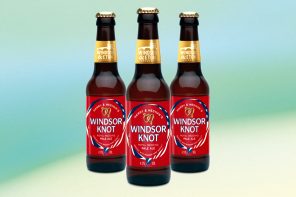If the infamously dogmatic and traditionalist wine world were to learn a few things, it would do best to look to its kissing cousin: the craft beer industry. Craft breweries have not only taken America by storm, they’ve done so in the shadow of giants like Anheuser-Busch, InBev and other mega-conglomerates that have dominated the market for decades.
As a CNBC article hailing the growth of craft beer points out, “The David and Goliath battle in the world of beer is starting to tip slightly in David’s favor.” In 2013, breweries opened at a staggering rate of “about 1.2 per day.” Meanwhile, “Craft beer production was up 9.6 percent in 2013, while overall beer production fell 1.4 percent.” Not only is craft beer winning over hearts and minds, it’s beginning to beat the big guys economically.
All of this wild success and continued growth seems to point to one fact: craft brewers know what the hell they’re doing. So when more and more craft breweries stopped bottling their beer and began to put it into cans, surprisingly few eyebrows were raised. According to Tom Acitelli’s article “Canned Mythology” in All About Beer, “The number of craft breweries canning at least some of their beers has increased at least 28,400% in the last decade.” That’s a lot of cans, man.
Perhaps this is because the brewing and beer drinking community is newer, younger and much less settled in its ways than your average winos are. After all, the craft beer ethos is hinged upon pushing boundaries and stressing each brewery’s individual identity, while winemakers often bow to at least 22 of one million conventions. But brewers didn’t start canning their beers just for the hell of it. The rising tide of canned craft beer owes itself to one simple fact: canning is a damn smart thing to do.
First and foremost, canning a beverage will almost always lower the price of that beverage, and that’s awesome. Not only is glass more expensive, it’s much heavier. This means that both production and shipping costs for canned libations are significantly lower than their bottled counterparts. And that means that you can get the drink you love for a lot less if it comes in a can.
But wait! Don’t cans mess up the quality of the stuff inside? If you’re picking out a 12-pack of PBR from a dusty bottom shelf in a bodega, then you can expect it to taste bad, sure. That’s because the big breweries don’t care enough to use canning technology that prevents liquid from picking up metallic and tinny flavors. Not to mention, that beer was cheaply made and was never going to taste good to begin with.
Truthfully, the argument that canning messes up the taste of whatever’s in the can will soon be seen as an antiquated and irrelevant one. Why? Because science. Recent innovations in can design have brought us polymer coatings that prevents those metal tastes from mingling with your drink of choice. Thanks again, science!
So, canning with this new technology is cheaper and it doesn’t actually alter the quality of the liquid inside. Sounds good, right? The benefits don’t end there… cans also come with the following perks:
1) Cans cool down much faster than bottled beverages
2) Because cans are opaque, they protect the liquid inside from damaging sunlight exposure
3) They’re super portable… Chardonnay at the swimming hole, beach, campsite etc.
4) There’s more space for artwork, labeling and sweet designs on a can!
5) They give you an excuse to stock up on awesome koozies.
The benefits of canning have not been lost on quality-minded craft brewers and craft beer drinkers, so how come there’s no wine in a can? Well, there actually is.
In December of 2014, Wine Awesomeness became (we’re pretty damn sure) the first wine club to send out a canned wine: the 2013 Fiction Red. It’s a spicy and sumptuous red blend made by the insultingly cool and much-envied winemakers at Field Recordings. This is one of the first wines of real quality to challenge the psychological wine in a can ban.
The vessel itself a thing of true beauty. But most importantly, the liquid inside of it is a testament to the fact that even though cans are cheap, what’s inside doesn’t have to be in the slightest. Sadly, this adventurous and game-changing wine stands virtually alone against a culture that dogmatically condemns anything not contained by glass. While the craft beer world has accepted the can with open hearts and open coolers, canned wine still comes with a serious stigma it simply doesn’t deserve.
It may be years before canned vino is met with anything other than bafflement or disdain. But little by little, young winemakers and drinkers are staging a quiet rebellion in which the functionality and cost effectiveness of the can is something to be celebrated, not condemned.
“Don’t speak too soon / For the wheel’s still in spin /And there’s no tellin’ who that it’s namin” Sang Bob Dylan… though probably not about canned wine. “For the loser now /Will be later to win/ For the times they are a-changin.”
Don’t make the future come to you. Open your mind and open a can.









